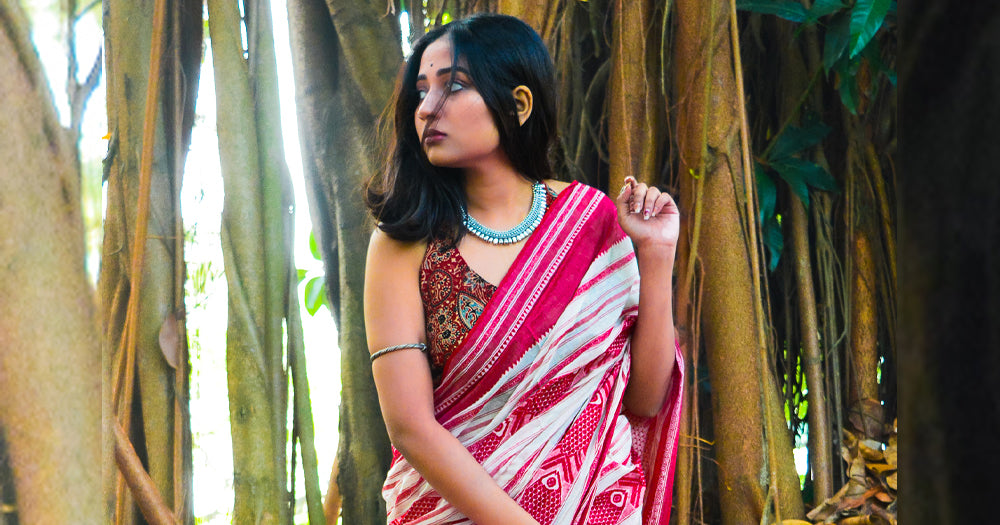Bengalis have a cherished association with sarees, and Bengal is known to produce some of the finest ones. When we speak of Bengal and its love for sarees, we cannot skip the mention of ‘Dhonekhali’. Traditional handloom sarees have a special place in our hearts and one of the most loved traditional weaves, has got to be the Donekhali. Let’s delve deep into the world of tradition and explore a little more about our beloved sarees.
About 50 kms from Kolkata, is another popular district named Hooghly. Hooghly boasts of the origin of the traditional Dhonekhali style of saree weaving, named after the place Dhaniakhaliin west Bengal.
And this story is not a thing of the recent past. Hooghly is home to some of the oldest cottage industries including handloom weaving, metal manufacturing, village tanning and so many more.
Often referred to as the ‘golden crop’ of Bengal handloom sarees, the Dhonekhali has gained popularity owing to its vibrant colour palette, minimal patterns, the comfort factor, unique design, and its long-lasting features.
An age-old craft, Dhonekhali was very much in existence during the British Raj. And the influence of this weave was such that it drew the British to the handloom industry and they had the best of cotton and muslin woven by Indian artisans for them to take back to Europe. It actually became quite a profitable business for British Textile Traders.
Dhonekhalisarees are known for their paper thin texture and that’s because of the fact that they are traditionally made using pure cotton, which makes them light in weight but heavy on comfort. A “Sar Reed”, from the Bamboo plant is a vital element of the Dhonekhali weaving technique as it is used to direct the threads so that the saree can get the desired texture.
The colour palette of the Dhonekhali has evolved with time. Back in the day, these handloom sarees were typically ‘Kora’, that is a shade of natural grey with a plain and simple red or black border. The decorative border design was derived from cotton dhotis and by 1940, weavers started adapting those designs to sarees giving rise to the Dhonekhalisaree trend.
The Dhonekhalisaree evolution gradually transformed the look of the saree and as of today, the traditional weave incorporates contemporary motifs and conceptual designs to walk hand-in-hand with the conventional sense of style.
Some of the finest examples of modern Dhonekhali weaves can be found in Uttariya, where our craftsmen weave stories into these sarees with intricate patterns and conceptual artwork. Our Sojne Phul Saree is a great example of how an inherent Bengali emotion associated with the SojnePhul can be incorporated into a traditional weave, making it not just a stunning saree, but also a symbol of our culture that we can wear with pride.

When it comes to Dhonekhali, it is the contrasting border that makes it stand out. A vivid colour palette is used to create an awe-striking border. Dashes of bright hues like red, purple, orange, are used to adorn the thick border that is enhanced with complex motifs. Uttariya’s Kamayita Saree will help you get a better picture of this distinctive factor of Dhonekhalisarees.
Now, do you know what is that one USP that is unique to Dhonekhali weaves? It is the ‘KhejurChori’ design thread. This particular pattern uses a special arrangement of weft threads created using twisted cotton yarns which are woven into the pallu of the saree. Uttariya’s Orange Fish Saree is vividly descriptive of this distinguishing factor of Dhonekhalisarees.
As of today, the Dhonekhali industry has expanded and the employment of a larger workforce allows artisans from rural areas to showcase their talent through this traditional art form. Uttariya strives to create a platform for such craftsmanship , so that our artists can receive global recognition and our art can go beyond borders.

